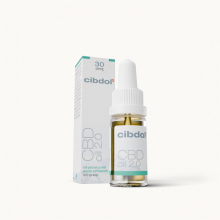10 Vegetables to Boost Your Health
Last updated:
Published:
Vegetables are low in calories and high in vitamins, minerals, fiber, and antioxidants to help support immune function, digestive health, and disease prevention.
Contents:
- What Makes Vegetables Healthy?
- Our Top 10 Nutrient Powerhouses
- Maximize Your Veggie Intake
- Veggies for Targeted Well-being
- Eat More Veggies Easily
- Beyond the Plate: Total Wellness
- Conclusion
-
Frequently Asked Questions
- What are the top nutrients found in healthy vegetables?
- How many servings of vegetables should I eat daily?
- Are raw or cooked vegetables healthier?
- Which vegetables are best for targeted health needs?
- How can I make eating more vegetables easier?
- Are organic vegetables healthier than conventional ones?
- Can vegetables help with weight management?

-
Eat a colorful array of veggies that are rich in nutrients, such as spinach, kale, broccoli, and sweet potatoes. They’re a great way to start meeting your nutritional needs each day and supporting your body’s wellness!
-
Nutritious cooking techniques like steaming and quick sautéing help retain nutrients and bring out vegetables’ natural deliciousness.
-
Eating seasonal and fermented vegetables can increase nutrient intake, improve gut health, and add diversity to your meals.
-
Incorporate easy hacks such as meal prep and unconventional combinations into your routine. Ingredient swaps help you incorporate more veggies at every meal—you can use them all day long!
-
Embracing a plant-based lifestyle enhances your spiritual, monetary, and physical wellness. Additionally, it protects your heart and digestive system, and promotes a healthier way of life for all.
They deliver powerful antioxidants, vitamins, fiber and minerals to fuel your body to perform at its best every single day. Leafy greens, such as spinach and kale, provide iron and vitamin K.
Broccoli and Brussels sprouts are both rich in vitamin C and other plant compounds with established health benefits. Sweet potatoes bring in beta-carotene and healthy carbs.
Red bell peppers are shining stars in vitamin A. Garlic and onions are good for heart health too, thanks to heart-loving sulfur-based compounds.
Carrots and beets provide antioxidants, including vitamin A, to protect our cells. Tomatoes provide lycopene, which is beneficial for heart and skin.
Eating a variety of these vegetables provides the greatest benefit. In the following pages, you’ll find each vegetable’s greatest benefits and best ways to enjoy them.
What Makes Vegetables Healthy?
Vegetables are central to any healthful dietary pattern. They are low in calories, and provide an impressive combination of vitamins, minerals, fiber and antioxidants!
At Cibdol we understand how all these fundamentals interact with each other to allow the body to maintain a state of strength and balance. Eating a wide variety of vegetables each day protects your heart, gut and immune health. This last benefit is second only to leafy greens.
Key Nutrients Unpacked
Vegetables are unique among foods for their vitamin richness. Carrots and sweet potatoes are rich in vitamin A, which supports eyesight and skin health.
Brussels sprouts and red bell peppers provide vitamin C, which is essential for a healthy immune system. Leafy greens, such as spinach, are high in vitamin K, important for blood clotting and bone health.
These micronutrients combat fatigue and support overall body function. Potassium, abundant in beets and cauliflower, is essential for cardiovascular health and plays a crucial role in regulating blood pressure.
Antioxidants & Fiber Power
Antioxidants in vegetables, such as sulforaphane in broccoli and quercetin in onions, combat cell damage caused by stress and environmental toxins.
Fiber, found in veggies such as cauliflower and red bell peppers, promotes gut health by nourishing beneficial gut bacteria. It aids in reducing cholesterol and maintaining regular digestion, too.
For antioxidant-rich choices, add these to your meals:
-
Broccoli
-
Red bell peppers
-
Spinach
-
Garlic
-
Onions
How Veggies Protect You
The vast majority of vegetables actively contribute to reducing the risk of chronic disease. Onions and garlic carry sulfur compounds that may help combat cancer.
For one, leafy greens and root vegetables reduce inflammation in the body. Colorful vegetables, rich in phytochemicals, help protect cells and maintain a healthy inflammation response.
Our Top 10 Nutrient Powerhouses
These nutrient-dense veggies provide an incredible array of vitamins, minerals, fiber and antioxidants with every delicious bite. They fuel the body’s essential systems, support mental clarity, and increase energy throughout the day.
At Cibdol, we believe that health needs to be considered from every angle. We view these underappreciated vegetables as hugely important pieces of the puzzle that creates a robust, healthy, balanced diet. Many of our readers are using plant-based foods to improve sleep, reduce stress, and aid in recovery.
Incorporating a variety of these vegetables into your meals every week is one of the easiest and delicious ways to protect long-term health.
Vegetables are available in all shapes, colors, and textures. Each one brings their own unique nutrient-packed punch. Some are high in vitamin C, others in iron or fiber.
What unites them all is their ability to help the body fight illness. They help you recover more quickly and help improve your day-to-day quality of life too. Meals are about much, much more than fueling our bodies.
Attending to this work, they can be reservoirs of deep, enduring wellness.
Here’s a quick chart showing how our top 10 vegetables stack up in terms of key nutrients. The nutrient values listed are per 100 grams of raw food, except where noted.
|
Vegetable |
Calories (kcal) |
Vitamin A (µg) |
Vitamin C (mg) |
Iron (mg) |
Calcium (mg) |
Fiber (g) |
Key Antioxidant / Nutrient |
|---|---|---|---|---|---|---|---|
|
Spinach |
23 |
469 |
28 |
2.7 |
99 |
2.2 |
Lutein, Zeaxanthin |
|
Kale |
35 |
500 |
120 |
1.5 |
150 |
4.1 |
Quercetin, Kaempferol |
|
Broccoli |
34 |
31 |
89 |
0.7 |
47 |
2.6 |
Sulforaphane |
|
Carrots |
41 |
835 |
7 |
0.3 |
33 |
2.8 |
Beta-carotene |
|
Bell Peppers |
31 |
157 |
128 |
0.5 |
10 |
2.1 |
Capsanthin, Beta-carotene |
|
Sweet Potatoes |
86 |
709 |
2.4 |
0.6 |
30 |
3.0 |
Beta-carotene, Anthocyanin |
|
Tomatoes |
18 |
42 |
14 |
0.5 |
10 |
1.2 |
Lycopene |
|
Garlic |
149 |
0 |
31 |
1.7 |
181 |
2.1 |
Allicin |
|
Onions |
40 |
0 |
7 |
0.2 |
23 |
1.7 |
Quercetin, Sulfur compounds |
|
Beets |
43 |
2 |
4 |
0.8 |
16 |
2.8 |
Betalains, Nitrates |
1. Spinach: Green Goodness
Spinach really shines when it comes to its high iron and calcium. A cup of raw spinach has just 6.9 calories yet provides a serious punch of folate, iron, and manganese.
Iron is essential for oxygen transport around the body, making you feel more energized and alert. Calcium, paired with vitamin K, keeps your bones dense and strong.
Spinach is loaded with carotenoids, particularly lutein and zeaxanthin. These potent antioxidants shield your eyes from blue light toxicity and assist in preventing age-related blindness!
Spinach is incredibly versatile as well. Add it raw to salads, blend it into smoothies, or stir it in soups and sauces.
Adding wilted spinach to an omelet or curry is an easy, delicious way to incorporate more greens into your diet.
2. Kale: Leafy King
Kale is sometimes referred to as a superfood, and rightfully so. It packs a greater punch of vitamin C than an orange with just 100 grams!
Additionally, it’s loaded with vitamin K, which is essential for strong bones and blood clotting. All this fiber aids digestion and can help regulate cholesterol levels.
In addition to all those vitamins, kale is filled with plant antioxidants like quercetin and kaempferol that work to combat stress in cells.
Give kale a massage. Rub it with a little olive oil and lemon juice to break down the fibrous texture and bitter flavor.
Experiment with it raw in salads, baked as chips, or cooked and sautéed with garlic and sunflower seeds.
3. Broccoli: Cruciferous Star
Additionally, broccoli’s high glucosinolate content is largely responsible for research’s connection of this cruciferous star to lower risks of several cancers.
In addition, it serves up a powerful combination of vitamin C, vitamin K and fiber. Incorporating broccoli into an overall healthy diet provides a wealth of essential nutrients.
These nutrients are important for the immune system function and maintain healthy bones. Its pungent flavor can vary depending on the method of preparation.
When it comes to preserving nutrients, steaming is top-notch. Fast stir-frying with sesame oil or high-temperature roasting with a touch of pepper intensifies the taste while locking in that snap.
4. Carrots: Vision & Vitality
Carrots are probably best known for its beta-carotene content, which the body can convert to vitamin A. One cup provides a whopping 119% of daily vitamin A requirement.
This helps support healthy vision, a normal immune system and healthy skin. Carrots provide digestion-friendly fiber and potassium to help maintain a regular heart rate.
Carrots work well in many simple recipes:
-
Raw with hummus or yogurt dip
-
Grated in salads or wraps
-
Roasted with herbs as a side
-
Blended into soups or smoothies
-
Baked in sweet treats like carrot cake
5. Bell Peppers: Colorful Defense
Bell peppers, particularly red ones, are bursting with vitamin C. One cup of chopped red pepper provides over 190 mg of vitamin C, along with vitamin B6 and folate.
These nutrients act as antioxidants and assist the body in fighting infection, healing wounds, and maintaining healthy skin. All that bright color is due to carotenoids, which are powerful antioxidants.
Bell peppers are delicious raw in a salad, sautéed in a stir-fry, or roasted and stuffed and baked. Their sweet flavor complements many dishes.
6. Sweet Potatoes: Energy Source
Sweet Potatoes—Production of slow-burning energy. Their complex carbohydrates are digested at a consistent rate, providing energy that lasts longer than simple sugars.
They’re very rich in beta-carotene and anthocyanins, essential nutrients for healthy eyes and cellular repair. Sweet potatoes are adaptable to sweet as well as savory dishes.
Try them roasted with cumin, mashed with a touch of cinnamon, or baked as fries. They can even be blended into soups or used in baked goods.
7. Tomatoes: Heart's Ally
Tomatoes are rich in lycopene, a powerful antioxidant that’s been linked to a lower risk of heart disease. Their vitamin C and potassium content support heart and blood health.
Tomatoes protect against inflammation throughout the body and promote overall health.
Try them fresh in a salad, slow-cooked in a sauce, or roasted for more mellow flavor. Cherry tomatoes are great for snacking, and sun-dried tomatoes bring flavor to pasta dishes and whole grains.
8. Garlic: Flavorful Protector
Garlic has been cultivated and utilized for thousands of years around the world, both for its robust flavor and health benefits.
It’s best-known compound is allicin, which kills germs and helps reduce cholesterol. Garlic is another valuable heart health ally and can help stabilize blood pressure.
Incorporate minced garlic into dressings, soups or vegetable side dishes. Roasting garlic not only softens its bite, but accentuates a savory, mild sweetness.
9. Onions: Layered Wellness
The sulfur compounds that give onions their bite, along with quercetin, protect cells from damage and may help reduce the risk of several diseases.
The soluble fiber in onions acts as food for healthy gut bacteria, enhancing digestion and reducing inflammation.
Sauté onions to form the base of soups, curries, or sauces. Raw onions provide crunch and intensity to salads, and cooked caramelized onions are luscious and sweet, making them great for grain bowls or on top of sandwiches.
10. Beets: Earthy Nutrition
Beets are high in fiber, folate and betalains—antioxidants that battle stress in the body. Their nitrates are cardiovascular superstars, enhancing heart health and increasing blood flow to deliver exercise and recovery benefits.
Dice cooked beets to add to salads, blend into smoothies, or roast for a side dish. Mix beet hummus into your diet or grate raw beets to sprinkle on top of salads for
Maximize Your Veggie Intake
Adding a variety of vegetables to your meals helps in more ways than you might realize. Eating a variety of vegetables gets important vitamins, minerals, and fiber into your body. These important nutrients and plant compounds combine to help you Live Longer, Live Better!
Studies have found that getting at least five servings of produce a day reduces the risk of heart disease. It cuts your risk of type 2 diabetes and even some cancers too. Cibdol recommends aiming for a wide range: leafy greens, peppers, mushrooms, and root vegetables all bring something different.
Add spinach to your breakfast smoothie and increase your vegetable consumption! Snack on carrot sticks, or replace grains with roasted squash for more tasty, colorful options. Combine raw and cooked varieties to increase flavor and texture.
Try these meal prep tips to make it easier:
-
Prewash and precut vegetables for easy-to-grab salads
-
Roast a tray of mixed vegetables for quick sides
-
Have pre-cut veggies ready to go in the fridge for easy snacks or stir-fry meals
Raw or Cooked: Best Approach?
Raw vegetables such as bell peppers and broccoli contain higher levels of vitamin C. Cooking increases the availability of some other nutrients. Cooked tomatoes are much higher in lycopene.
Steaming and sautéing are much better nutrient-preserving techniques than boiling. To get the optimal combination, consume some vegetables in their uncooked state (especially leafy greens and carrots), while cooking others (mushrooms and tomatoes).
Smart Cooking Saves Nutrients
Steaming retains vitamins by stopping them from leaching away. Sautéing with a small amount of cooking oil adds flavor while reducing nutrient loss. Fast stir-frying is another good technique.
Loss is especially high for water-soluble vitamins with boiling.
Choose Seasonal for Peak Value
They’re more delicious and affordable, since seasonal veggies are at their peak value. They’re more nutrient-dense since they’re more fresh. Look for these:
-
Spring: Asparagus, peas
-
Summer: Tomatoes, zucchini, peppers
-
Autumn: Pumpkins, beets
-
Winter: Cabbage, Brussels sprouts
Food Pairings That Work
Food pairing makes it easier for your body to absorb nutrients. Tomatoes cooked with olive oil increase lycopene absorption. Eat leafy greens alongside citrus (vitamin C) to increase iron absorption.
Pair cabbage with carrots in slaws, or sweet potatoes with beans in salads.
Explore Fermented Veggies Too
Fermented vegetables, such as kimchi, sauerkraut, and pickles, are rich in probiotics which nourish gut bacteria to improve digestion. Fermentation breaks down some nutrients, making them more accessible to your body.
Include a side of these at your meals.
Veggies for Targeted Well-being
The specific veggies you select will have the greatest impact to improve your health. At Cibdol, we understand that all people are different. Individuals have specific goals—whether it’s support for their heart, improved digestion or enhanced immune defenses.
So it’s only logical that you start by identifying veggies that will help you achieve your goals. Science is on our side. Leafy greens, like spinach and kale, are awesome for increasing bone density!
In the meantime, beets and cruciferous veggies give your heart the support it needs right now.
|
Vegetable |
Key Benefit |
Example Nutrients |
|---|---|---|
|
Kale |
Cholesterol, Bones |
Vitamin K, Fiber |
|
Spinach |
Eyes, Brain, Bones |
Antioxidants, Vitamin K |
|
Broccoli |
Immune, Anti-cancer |
Vitamin C, Sulforaphane |
|
Beetroot |
Heart, Blood Pressure |
Nitrates, Folate |
|
Cabbage |
Gut, Immunity |
Fiber, Probiotics (if fermented) |
|
Brussels Sprouts |
Anti-cancer, Digestion |
Fiber, Vitamin C |
|
Carrots |
Eyes, Immunity |
Beta-carotene, Fiber |
|
Cauliflower |
Anti-cancer, Gut |
Fiber, Antioxidants |
Boost Your Immune Defenses
Veggies that really shine for immune protective support include broccoli, spinach and carrots. They are high in vitamin C, A, and antioxidants which protect cells from damage.
Incorporating these into soups, salads, or stir-fries makes it easy to pack immune-boosting power into everyday meals. Fermenting cabbage into sauerkraut introduces probiotics, which promote a healthy immune system.
Support Natural Heart Health
Beetroot and kale provide powerful heart-health benefits. Nitrates found in beets naturally lower blood pressure.
Research indicates that eating kale can increase good HDL cholesterol and decrease bad LDL cholesterol within two months. Dishes such as beet salad or kale smoothies are easy to incorporate into your diet to support heart health.
Aid Your Digestive System
This three-way combo of cabbage, cauliflower, and Brussels sprouts delivers fiber and other gut-loving compounds. Fiber helps to support helpful bacteria and helps digestion move along.
Adding in some fermented veggies, such as kimchi or sauerkraut, provides an extra boost of probiotics. Preparing them raw salads or lightly steaming these veggies helps retain their gut health benefits.
Eat More Veggies Easily
Everyone knows that vegetables are the foundation of a healthy diet. They provide the body antioxidants, fiber, vitamins, minerals, and plant compounds that support health. Increasing consumption of a variety of vegetables can reduce risks for chronic diseases, such as heart disease and certain cancers.
At Cibdol, we understand the importance of simple, everyday decisions that allow you to feel your best. Making eat more veggies easily an actionable choice is essential. Adding more vegetables is one of those choices.
Because snacks and meals are the optimal opportunity to increase your veggie consumption. Even on our most hectic days, these simple tweaks can go a long way. Pre-chopped veggies, canned beets or carrots, and quick-cooking greens such as spinach are all no-brainers to toss in.
Try these simple snack ideas:
-
Sliced bell peppers or cucumbers with hummus
-
Roasted chickpeas
-
Cherry tomatoes and olives
-
Carrot sticks with a yogurt dip
Simple Swaps, Big Impact
Replacing starchy sides with vegetables greatly increases nutrition while maintaining flavor. Trade white rice for cauliflower rice or mashed potatoes for equal parts mashed carrots and parsnips.
Replace wheat or corn tortillas with leafy greens for wraps. These simple swaps make meals more satisfying while introducing more fiber and antioxidants.
Make Veggies Delicious Always
Cooking affects flavor, smell, texture, and nutrients. Roasting onions, bell peppers, or broccoli until they start to caramelize enhances their sweetness.
For example, steaming spinach or Swiss chard will help retain their nutrients and vibrant color. Fresh herbs, a squeeze of lemon juice, or a dusting of nuts or seeds take dishes from good to great.
Even the world’s pickiest eaters will come around on vegetables when they’re prepared properly and seasoned appropriately.
Overcome Common Veggie Blocks
Some common barriers are taste, texture, or time constraints. For picky eaters, consider stirring very finely chopped greens into sauces or soups.
Provide dips such as hummus or ranch with raw veggies. Invite children to assist in selecting and cooking unfamiliar varieties.
Tips for more veggies:
-
Toss baby spinach into pasta in the final minute of cooking
-
Keep canned peas or carrots for quick meals
-
Serve vegetables in different shapes or with favorite flavors
Beyond the Plate: Total Wellness
Fruits and veggies do so much more than beautify a plate. They are a beautiful addition to our lifestyle that support both body and mind. Vegetables are the foundation of a balanced life, and Cibdol understands this.
Eating vegetables doesn’t only provide vitamins and fiber. It reduces the risk of cardiovascular disease and enhances immune function! The connection is more than just an old wives tale—new research has directly connected high vegetable consumption to improved mood and cognitive function.
For most, adopting a diet that includes more green leafy veggies or bright orange/yellow root vegetables results in improved mental clarity and greater energy levels. It is not just about the food. First and foremost, it determines our physical health.
Veggies: Your Health Foundation
Veggies are the foundation of a strong, healthy lifestyle. Make non-starchy veggies the foundation of your health. Fill up on spinach, broccoli, and red peppers to receive a wide variety of important vitamins and minerals.
These add fiber, which promotes gut health and supports weight management. Diets high in vegetables can reduce the risk of chronic conditions like heart disease and certain cancers. Aim to make greens, hearty roots, or crispy salads the focus of your meal.
Pair a veggie with beans, seeds, or grains for a little nourishment. That’s how we ensure every meal is as fresh and nutrient-dense as possible.
Lifestyle Choices for Fullness
Healthy habits create a fertile ground for nourishing our bodies. When they are more active, people make healthier food decisions. The connection between being active and eating lots of vegetables is pretty powerful!
Making small changes—such as making cut vegetables available for healthy snacks or putting leafy greens into breakfast—will get you there and develop these habits. Replace meat with grilled vegetables on one day each week.
Having a combination of fresh, frozen, and canned vegetables available can be useful to accommodate those busier days.
Natural Support for Balance
Eating a variety of vegetables provides the many nutrients needed to help support every system in your body. Leafy greens and cruciferous varieties, such as kale or cauliflower, are rich in antioxidants.
These vitamin-like compounds are important for helping the body combat stress and maintain healthy cells. Taking the opportunity to sample different vegetables opens up a world to new sources of nutrients.
This helps improve mood while increasing attention and focus. Variety is important—each vegetable has its own special contributions to offer.
Conclusion
Fresh greens, roots and stalks are one of the best ways to get high quality fuel for our bodies. From vitamin K to anthocyanins, each veggie on this list is bursting with potent vitamins, filling fiber, and plant power. Leafy greens increase the bioavailability of iron and calcium. Colorful carrots and peppers not only bring more crunch and flavor, they bring more than flavor—more beta-carotene and vitamin C. Easy swaps, such as tossing spinach into pasta dishes or munching on raw bell pepper with lunch, can lead to major improvements for health. By eating a variety of these ten nutritious veggies, mealtime stays colorful and the body stays healthy. Whole foods, smart choices, simple steps, happier lives. Experiment with different flavors, shake up your plate, and find out what you love the most. To learn how to introduce new flavors and vibrant colors in your dishes, visit Cibdol’s guides on meal-prepping to make every meal feel new.
Frequently Asked Questions
What are the top nutrients found in healthy vegetables?
Top nutrients found in healthy vegetables Key nutrients found in healthy veggies vitamin C vitamin K folate potassium magnesium These promote healthy functioning, strengthen the immune system, and protect against disease.
How many servings of vegetables should I eat daily?
Try to eat a minimum of 400 grams (or five servings) of vegetables per day. This makes it easier for you to meet your nutrient needs, promotes healthy digestion, and lowers your risk of chronic disease.
Are raw or cooked vegetables healthier?
Are raw or cooked vegetables healthier. While colorful raw veggies do contain important vitamins, cooking vegetables can increase the bioavailability of other nutrients. Eating a combination of the two provides the greatest benefits.
Which vegetables are best for targeted health needs?
Leafy greens, which are high in vitamin K, such as spinach protect artery walls from damage. Cruciferous vegetables, like broccoli, help support the detoxification process. Carrots and sweet potatoes are good for your eyes. Carrots are good for your eyes. Which vegetables are best for targeted health needs?
How can I make eating more vegetables easier?
Sneak veggies into soups, salads, and smoothies. Have pre-cut veggies on hand for snacks. To add more taste, maximize health benefits and increase variety, try roasting or grilling your veggies. Fortunately, even small changes can make it easier to increase your intake.
Are organic vegetables healthier than conventional ones?
Organic vs Conventional Are organic vegetables healthier than conventional ones. So, are organic vegetables healthier than conventional ones? The point is to eat a diverse array of vegetables, whether organic or conventionally grown.
Can vegetables help with weight management?
Can vegetables help with weight management? In addition to filling you up with fewer calories, they can help you achieve a healthy weight and promote a healthy lifestyle overall.














